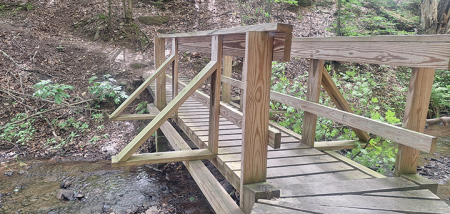Lyme Disease Awareness Month
Published:
May 2nd, 2016
By:
Sen. James Seward
May is Lyme Disease Awareness Month and with the high number of reported cases in New York, it is important to arm yourself and your family with the tools to avoid the disease when possible, and detect and treat when necessary. The New York State Senate has focused the spotlight on Lyme disease in recent years with the creation of a special task force that has helped enact legislation to improve prevention, diagnosis, and treatment. The recently enacted state budget includes $600,000 to continue the support of these efforts.
Lyme disease is an infection, caused by bacteria, that is spread by the bite of an infected tick. Lyme disease can affect the skin, joints, nervous system and/or heart. The northeastern United States continues to be on our nation’s hardest hit regions when it comes to Lyme and other tick-borne diseases. According to the Centers for Disease Control and Prevention (CDC), New York State had 2,853 confirmed cases of Lyme disease in 2014, with another 883 probable cases reported to the agency. When detected early, it usually can be treated with oral antibiotics. If left untreated, it often causes serious health problems.
The type of tick responsible for spreading Lyme disease in New York is the deer tick. Not all deer ticks carry the bacteria that cause Lyme disease; they become infected after feeding on an infected animal such as a mouse or other small mammal. Transmission from infected ticks does not occur until a tick has been attached and feeding for at least 24 to 36 hours, which is why it is important to always check for ticks after spending time outdoors. You cannot get Lyme disease from another person or an infected animal.
We are entering peak season for deer ticks. They are active when the weather stays above freezing, usually from April through November. Young deer ticks, called nymphs, are active from mid-May to mid-August and are about the size of poppy seeds. Adult ticks, which are approximately the size of sesame seeds, are most active from March to mid-May and from mid-August to November.
While there is no way to protect yourself completely from being bitten by a tick while in an infested area, there are steps you can take to reduce your risk:
Stay on the center of trails and paths;
Wear long pants and long sleeved shirts, and tuck the legs into your socks or boots;
Wear light colored and tightly woven clothing;
Use an insect repellent;
Check yourself, your children and pets for ticks often. Pay special attention to the backs of knees, behind the ears, the scalp, armpits and back.
As soon as you find a tick attached to your skin, remove it. Use tweezers to grasp the tick as close to the skin as possible and pull out steadily and firmly, making sure the entire tick is removed. After removing the tick, thoroughly disinfect the bite site and wash your hands. See or call a doctor if there are concerns about incomplete tick removal. Do not attempt to remove ticks by using petroleum jelly, lit cigarettes or other home remedies because these may actually increase the chance of contracting a tick-borne disease.
Early symptoms appear anywhere from three to thirty days after the bite of an infected tick. In 60 to 80 percent of the cases, a red rash resembling a bull’s eye or solid patch, about two inches in diameter, appears and expands around the site of the bite. The rash may be accompanied with a fever, headache, muscle/joint pain and/or swollen glands. Medical personnel agree that early diagnosis and treatment are critical in preventing a serious later-stage disease and potentially chronic illness.
Additional information is available through the New York State Department of Health website at www.health.ny.gov. By knowing the facts and taking precautions you can enjoy the outdoors and avoid Lyme disease.
Author: Sen. James Seward - More From This Author
Comments








